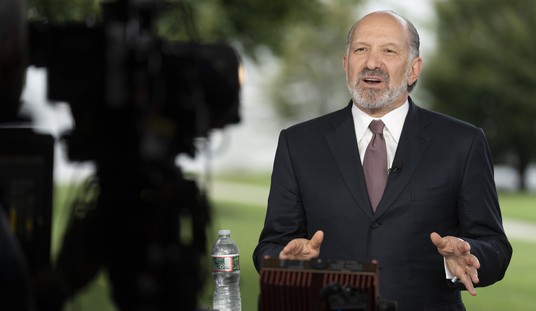Before the Call of Duty franchise took on the subtitle Modern Warfare, it arguably reigned as the pinnacle of the World War II genre. While other first-person shooter games like those in the popular Tom Clancy series — including hit franchises like Ghost Recon and Rainbow Six — offered players the ability to engage in simulated modern warfare, for much of video game history the default setting for a run-and-gun, first-person shooter was World War II.
Many factors contributed to the period’s popularity as a setting for video-game violence. Chief among them march the jackbooted villains of the era, the Nazis. No one feels bad after shooting a Nazi. In fact, their evil proves so incontestable and absolute that killing them fulfills a profound sense of justice. No doubt that moral certitude contributed to their proliferation throughout gaming. Killing Nazis invites no controversy, leaving game developers with one less thing to worry about.
While the nature of Nazi evil may seem self-evident, the recent anniversary of the Holocaust Museum in Washington, D.C., provided an occasion to demonstrate that even former United States presidents can miss the mark. The local CBS affiliate reports:
Washington has many monuments and memorials that offer something special for visitors from around the world, “but the Holocaust memorial will be our conscience,” [President] Clinton said.
Since the museum opened 20 years ago, the world has made huge scientific discoveries, including the sequencing of the human genome, which proved humans are 99.5 percent genetically the same, Clinton said.
“Every non age-related difference … is contained in one half of 1 percent of our genetic makeup, but every one of us spends too much time on that half a percent,” Clinton said. “That makes us vulnerable to the fever, the sickness that the Nazis gave to the Germans. That sickness is very alive across the world today.”
The report does not include any specific examples of what Clinton diagnoses as the Nazi “sickness.” However, we may fairly assume he was referring to any intolerance of human diversity.
While racial hatred is certainly repugnant, that alone hardly encapsulates the evil of the Nazis. Misdiagnosing their sickness as merely an attitude toward superficial differences fosters a distorted view of their offense, leaving modern evils out of focus.
Hating Jews and other minority groups was not the chief offense of the Nazis. Violating individual rights was. Racial hatred was the repugnant frosting on a vile and poisonous cake. Hating someone on account of their ethnic origins, while certainly distasteful, does not harm the hated individual. Hate alone cannot deprive someone of anything. It cannot — without further action — take life, encroach upon liberty, or seize property. Those violations can certainly be motivated by racial hatred, as was the case with the Nazis. However, motivation matters little compared to the violations themselves.
We should be concerned when someone as prominent and influential as Clinton fails to recognize such a distinction because his lack of focus mirrors that of many social-policy crusaders who believe that the greatest evil facing our world is “intolerance.” Of course, by “intolerance,” what they really mean is any politically incorrect, opposing opinion. When that becomes the standard of evil, the “sickness” which must be purged from the world, than any means becomes justified in siphoning it from the body politic. In practice, that translates to state-sanctioned rights violations in the name of promoting “tolerance.” Thus, a misdiagnosis of evil enables evil to masquerade as good.
To understand this better, we need only look closer at the Nazi menace. Racial hatred was not a primary upon which Nazism was built, but a byproduct of the underlying ideology of fascism. We often think of concentration camps and Holocaust victims when the term “fascist” is evoked. However, fascism does not require concentration camps to exist. Fascism, as described by one of its fathers, Benito Mussolini, subordinates the individual to the state:
The foundation of Fascism is the conception of the State, its character, its duty, and its aim. Fascism conceives of the State as an absolute, in comparison with which all individuals or groups are relative, only to be conceived of in their relation to the State.
That fundamental valuation of state over individual informs the taking of lives, the deprivation of liberty, and the seizing of property. Racial hatred serves only as an effective means to foment the troops, not the means through which they are deployed in the first place. Without a state to institutionalize racial hatred, the atrocities of the Holocaust would not likely have occurred. That is why, despite the fact that Nazis still linger among us even here in the United States, we need not fear them above any common thug because our state retains some valuation of the individual.
To the extent any state subordinates individual lives, it takes on a more fascist character. Therein lies the danger of Clinton’s misdiagnosis. The real Nazi sickness is statism. Clinton would be right to point out that it remains alive across the world today, if statism was what he was referring to. Unfortunately, he was most likely referring only to racial hatred. That missed mark enables statist solutions to racial attitudes – quotas, speech codes, hate crimes, etc. Thus the cure becomes worse than the disease.
Thomas Sowell had a great piece at Townhall last summer which highlighted the fundamental characteristics of fascism and how they have come to fester within American jurisprudence.
It bothers me a little when conservatives call Barack Obama a “socialist.” He certainly is an enemy of the free market, and wants politicians and bureaucrats to make the fundamental decisions about the economy. But that does not mean that he wants government ownership of the means of production, which has long been a standard definition of socialism.
What President Obama has been pushing for, and moving toward, is more insidious: government control of the economy, while leaving ownership in private hands. That way, politicians get to call the shots but, when their bright ideas lead to disaster, they can always blame those who own businesses in the private sector.
Politically, it is heads-I-win when things go right, and tails-you-lose when things go wrong.
You can own your factory, but the state will tell you what you can do with it. You can keep your insurance, but the state will tell you what it has to cover. You can buy land and build a home, but the state will tell you how big it can be. You can open a business, but the state will tell you who you must employ and how much you must pay them.
All such encroachments upon the individual’s ability to act upon their own judgment in pursuit of their own happiness are manifestations of the real Nazi sickness, albeit several degrees less egregious than ghettos and concentration camps. When we misidentify racial hatred as the chief culprit, we actually enable the very evil we should seek to overcome. For if racial hatred is the primary problem, any legislation which attempts to compensate for it appears justified.
Shooting virtual Nazis feels good because the criminal institution they represent offends our objective sense of justice. In future posts, we’ll take a look at other villain archetypes who frequent our digital fantasies.













Join the conversation as a VIP Member